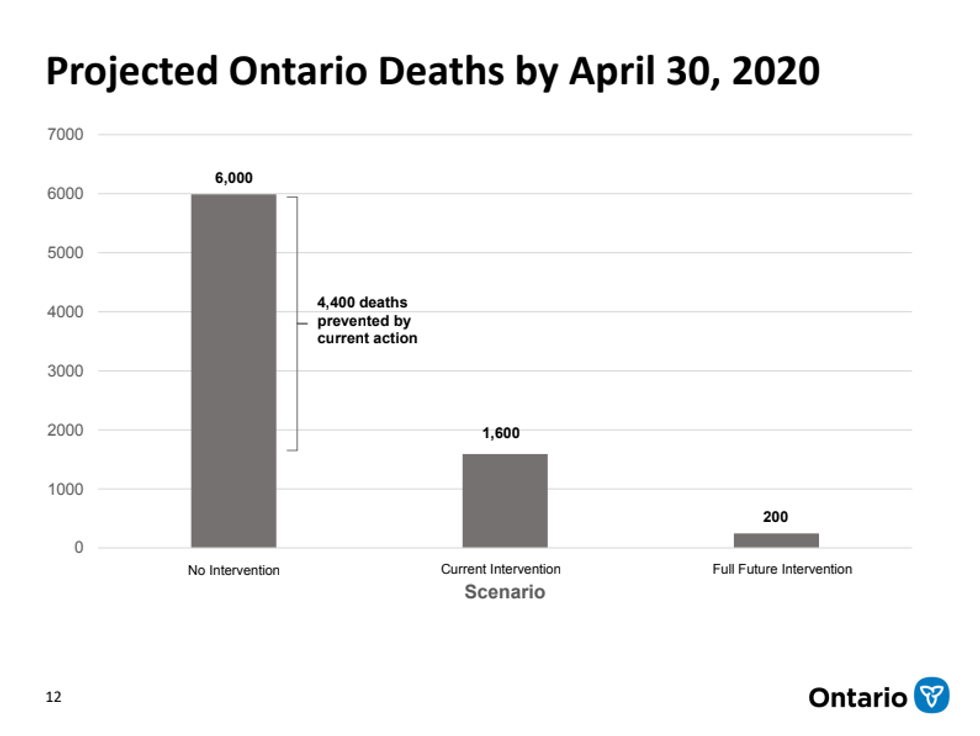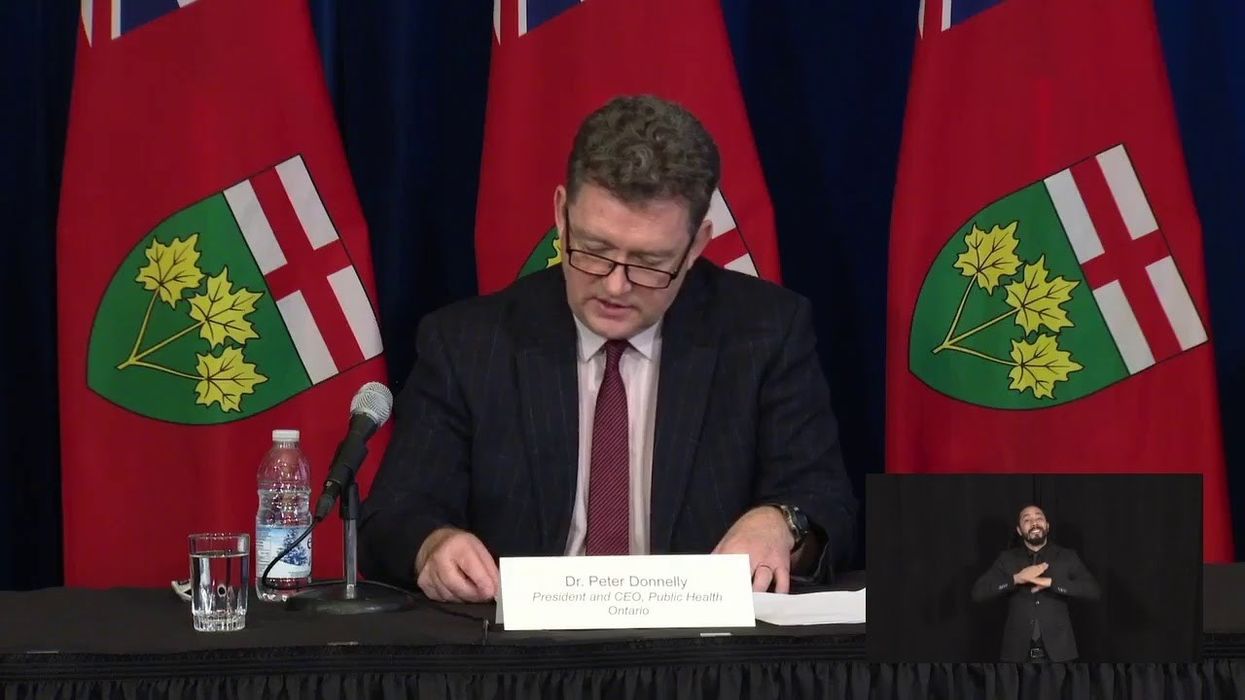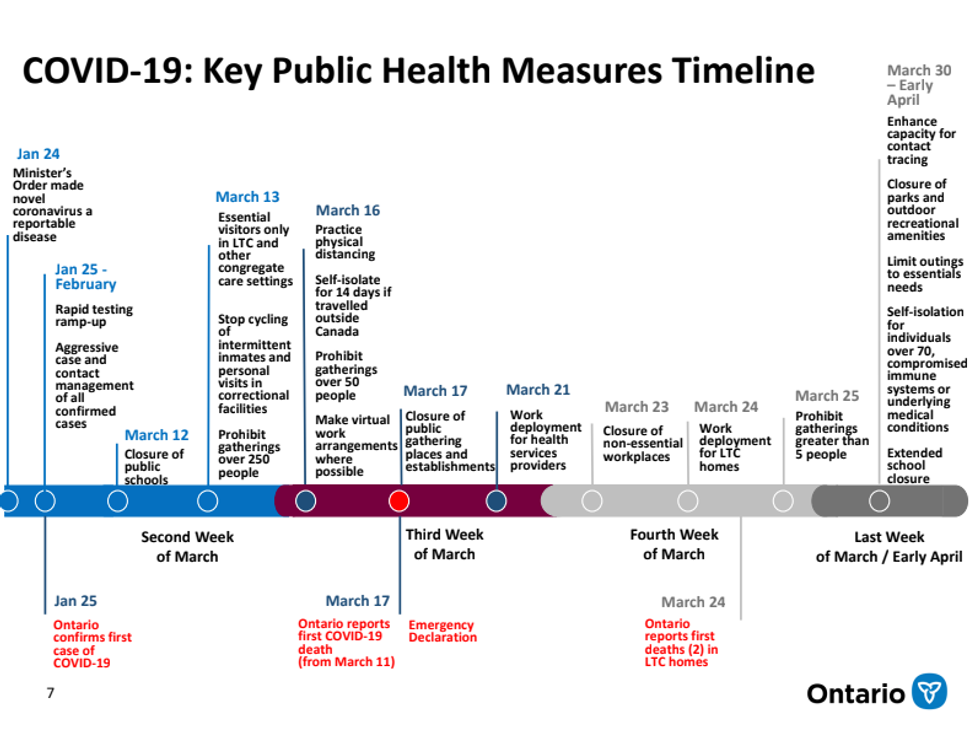Yesterday, Premier Ford announced that Ontario’s top doctors would be sharing the coronavirus modelling projections they've been using to make decisions surrounding closures and social distancing measures.
“You deserve the same information I have,” Ford said in his pubic health briefing yesterday. “I want everyone to know where Ontario was, where we’re at now, and where we could be.”
RELATED:
- Parts of Construction Industry to Be Shut Down By Ford Government: Report
- New Toronto By-law Prohibits Being Within 2-Metres of Another Person in Public Places
- Tracking Every Coronavirus Case in Toronto (MAP)
Today, Dr. Peter Donnelly, President and CEO, Public Health Ontario, led the presentation of figures. "How this outbreak unfolds is in the hands of the public, in effect, in all our hands," Donnelly said.
Donnelly said what's "striking" is the data shows the high mortality rate in those over 80, which is why the province must work together to protect the elderly.
Three scenarios have been presented regarding the number of projected deaths in Ontario by the end of April: No Intervention; Current Intervention; Full Future Intervention.

The current model shows about 1,600 deaths are expected by the end of April if further measures are not taken. However, if full, future intervention is taken, just 200 deaths are suspected.
With current public health measures in place, Ontario is projecting between 3,000 to 15,000 deaths. Without these measures, Ontario could have seen up to 100,000 deaths.
“Bearing down heavily on this disease now saves lives, helps our health system to cope and also helps the economy,” said Donnelly.
And while public health measures so far have made a significant difference, Donnelly says additional public health measures will be implemented. They are as follows:
- Reduce the number and types of essential workplaces
- Enhance focus on enforcement and fines for non-compliance
- Expand direction/guidance on physical distancing, including retail settings
- Enhanced support for elderly, homeless, and other vulnerable populations and communities
- Consider entry restrictions in some communities including First Nations.
- Human resource management (movement of health care workers between settings)
- Use of technology to reinforce self-isolation (Alerts)
- Additional public education and communication (shelter in place with limited exceptions)
Donnelly added that the province has now eliminated the backlog of tests.
“That is important because that now allows us to use tests in a very focused and strategic way.”
The models and projections will continue to be revised on an on-going basis as more and more information become available. Currently, Donnelly puts Ontario on a similar trajectory to the United States, not quite as good as British Columbia is doing.
As of Friday morning, there have been 3,255 confirmed cases of coronavirus in Ontario so far and 67 deaths and 1,023 resolved cases related to the virus.






















